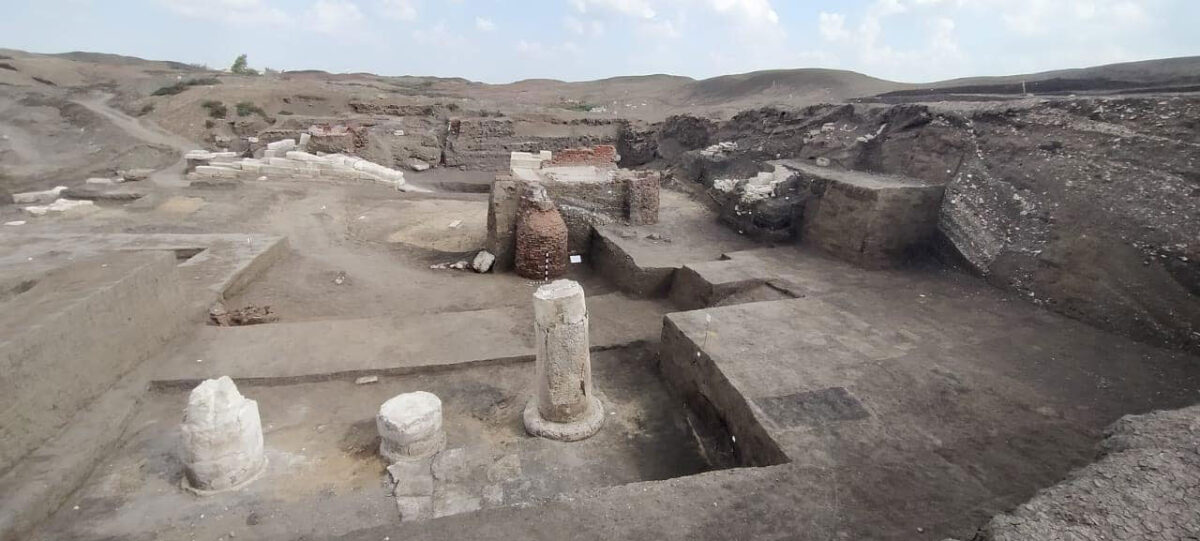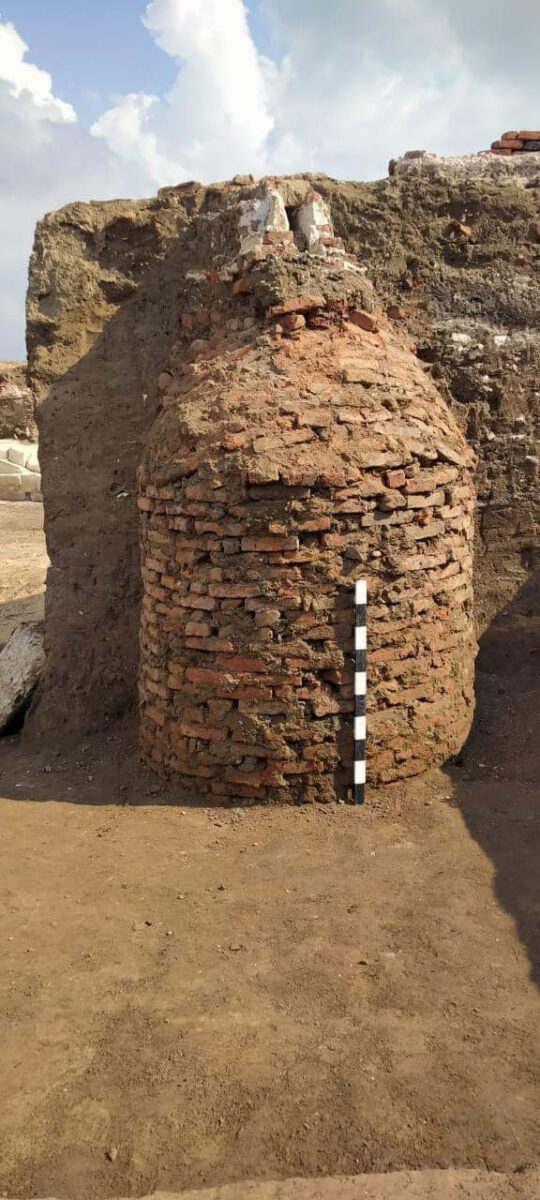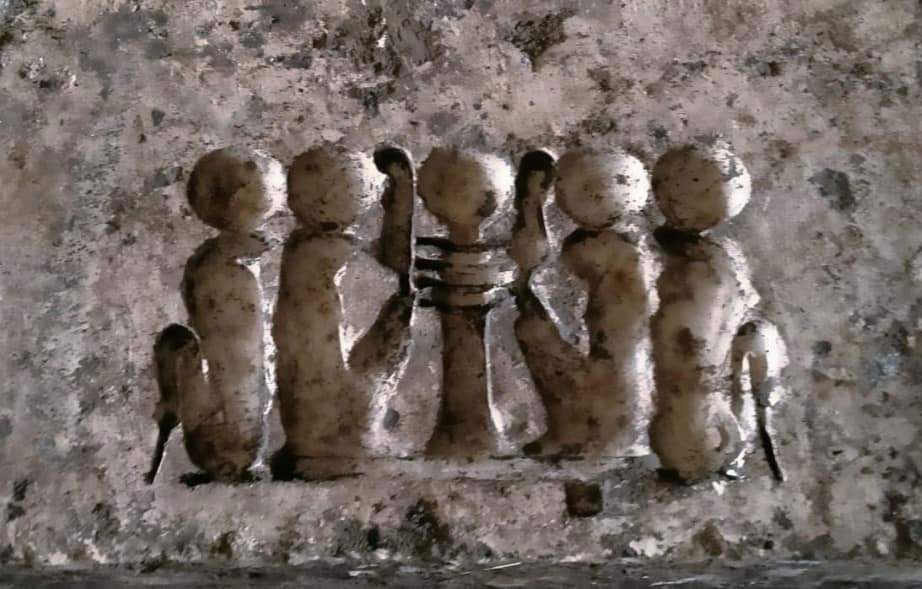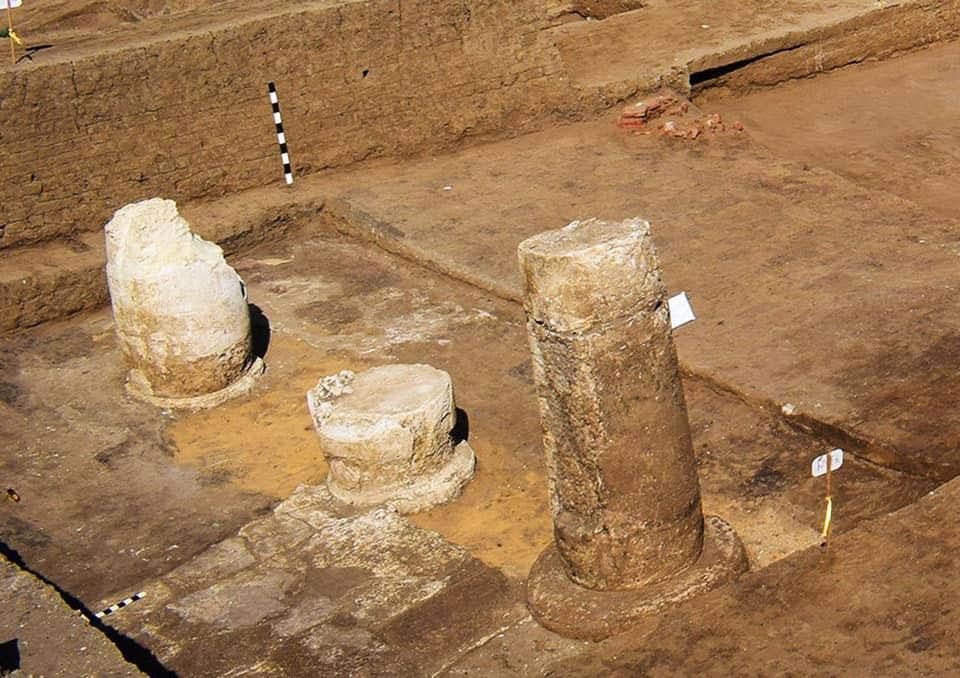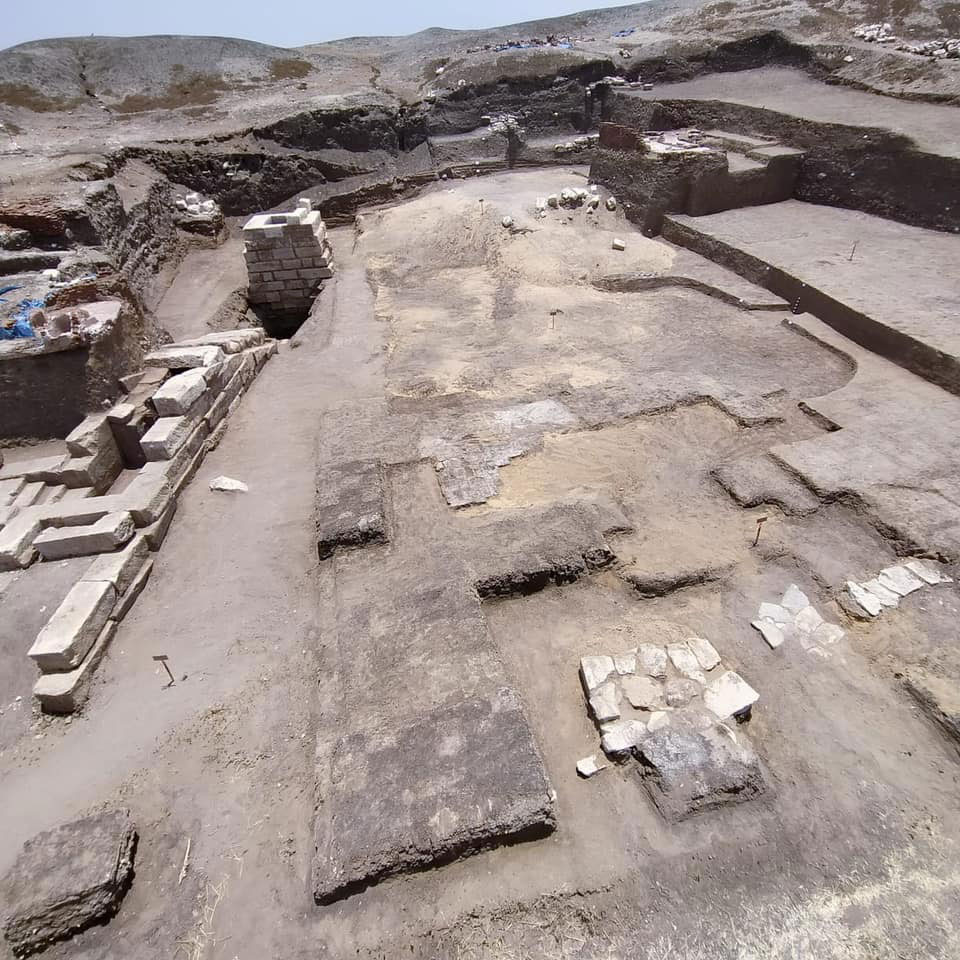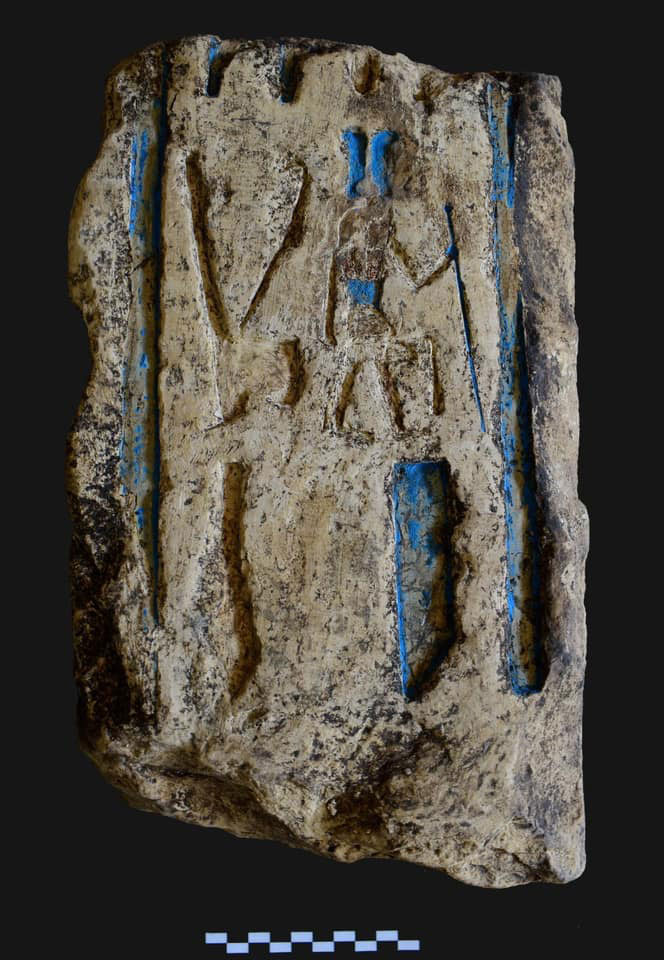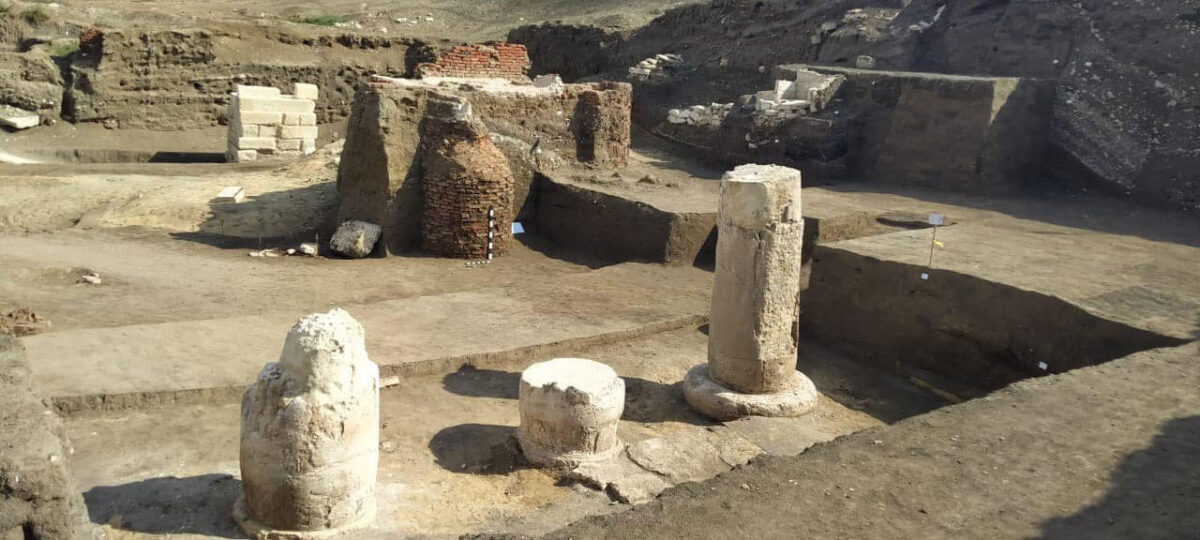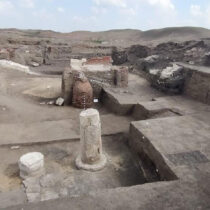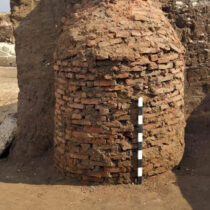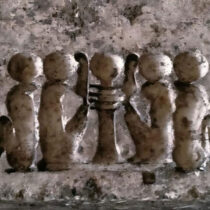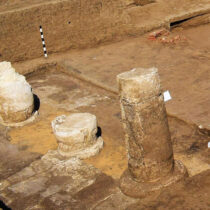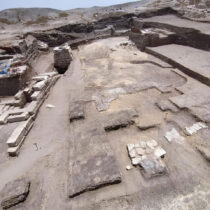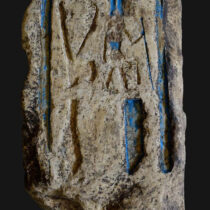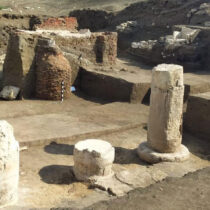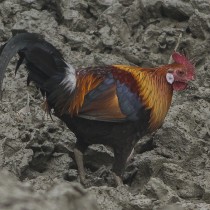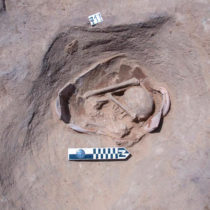Egyptian archaeologist working for the Supreme Council of Antiquities at the temple of Tell Al-Fara’in, the ancient Buto in Kafr El-Sheikh Governorate, uncovered the remains of a colonnaded hall, upon the completion of the excavation work in the temple.
This was stated by Dr. Mostafa Waziri, Secretary General of the Supreme Council of Antiquities, who pointed out that excavating this part of the ruins of Buto’s temple is an important scientific and archaeological contribution to the understanding of the building’s architectural design. The temple in Buto is spread over an area of 11 acres and is surrounded by a large brick wall. It seems to have been founded during the New Kingdom but flourished during the Saite period.
For his part, Dr. Ayman Ashmawy, head of the Egyptian antiquities sector at the Supreme Council of Antiquities, argued that the remains of the hypostyle hall may date back to the Saite period, as the excavation also brought to light a series of Saite-era ritual vessels. He added that the remains of the hypostyle hall are located at the southwest end of the temple. The extent of the section uncovered so far is about 6.5m x 4.5m, and includes three partially preserved papyrus-shaped columns. The papyrus (Waj) was a symbol of Lower Egypt, associated with Wajit, the main deity of the temple of Buto. The room has a North-South orientation.
Professor Qutb Fawzi, Head of the Central Administration of Lower Egypt, said the expedition also revealed a limestone slab representing a bird-headed deity wearing a white crown (a symbol of Upper Egypt), surrounded by two feathers. The deity might be identified with Goddess Nekhbet (Nekhbet) or Goddess Mut. A limestone crypt, protected by thick mud brick walls, was also excavated at a level higher than the temple’s floor. Offering vessels revealed near this area, show that the crypt was possibly built as a storage area for votive statuettes.
Dr. Hossam Ghoneim, General Director of Antiquities of Kafr El Sheikh and head of the mission, said that excavation work at the site is ongoing, hoping to uncover more evidence about this area and Egyptian culture.
He also said that during the last excavation season at the site the mission uncovered a huge building, a number of ritual objects related to religious ceremonies in the temple, a group of ivories, some gold objects, as well as hieroglyphic inscriptions.
